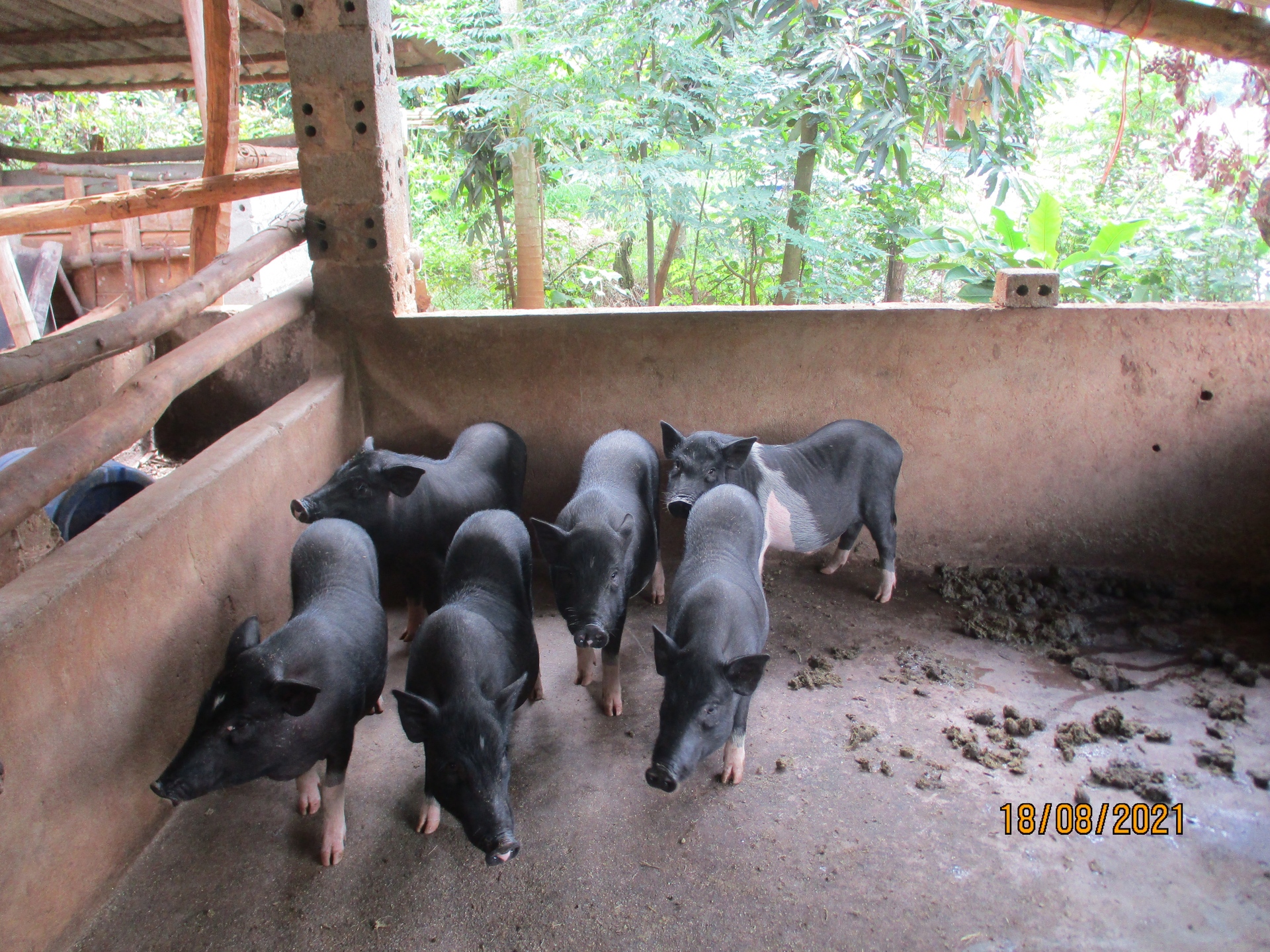
Mr. Nguyên’s pigs are indigenous. He bought piglets and will raise them until Tet (Vietnamese Lunar New Year), when they will be sold. Each piglet weighs 6–8 kilogrammes and was bought for 200,000 dong (9 US dollars) per kilogramme. When they are sold, each pig weighs about 30 kilogrammes and the selling price is 140,000–150,000 dong (7 US dollars) per kilogramme live weight. The bigger the pigs, the lower their price. Pigs raised to the age of 10–12 months get the best price. Beyond this age, they get fat and can only be sold at a lower price, only 70,000–80,000 (3.5 US dollars) per kilogramme. They are usually bought and then transported to the delta. It is easy to sell indigenous pigs. They are in great demand because their meat is delicious.
Here people prefer indigenous pigs to cross-bred pigs because they are used to raising them. Their meat is delicious and sold at a higher price. Thai people who used to work in crop production cannot raise super-lean pigs because they only feed them with vegetables and corn rather than concentrated animal feed. It’s more profitable to have a large herd. It's not worth raising only a few pigs. The advantages of white pigs are that they are fast growing and leaner. The fat layer of indigenous pigs may be 10 centimetres thick and the pigs grow slowly. When white pigs are sold at four months, their weight may have reached 80–100 kilogrammes. It takes indigenous pigs 10–12 months to reach 50–60 kilogrammes. Most of the villagers don’t raise these pigs for sale but only for their own use at weddings and offerings. They don’t have to buy them if they can raise them.
Narrator and photographer: Lường Văn Yêu (Thai ethnicity, 46 years old)